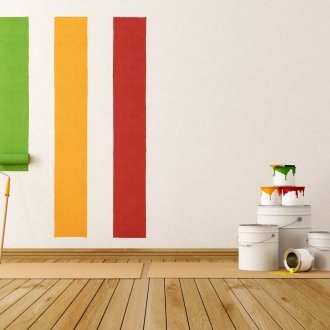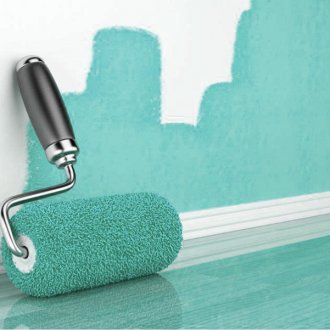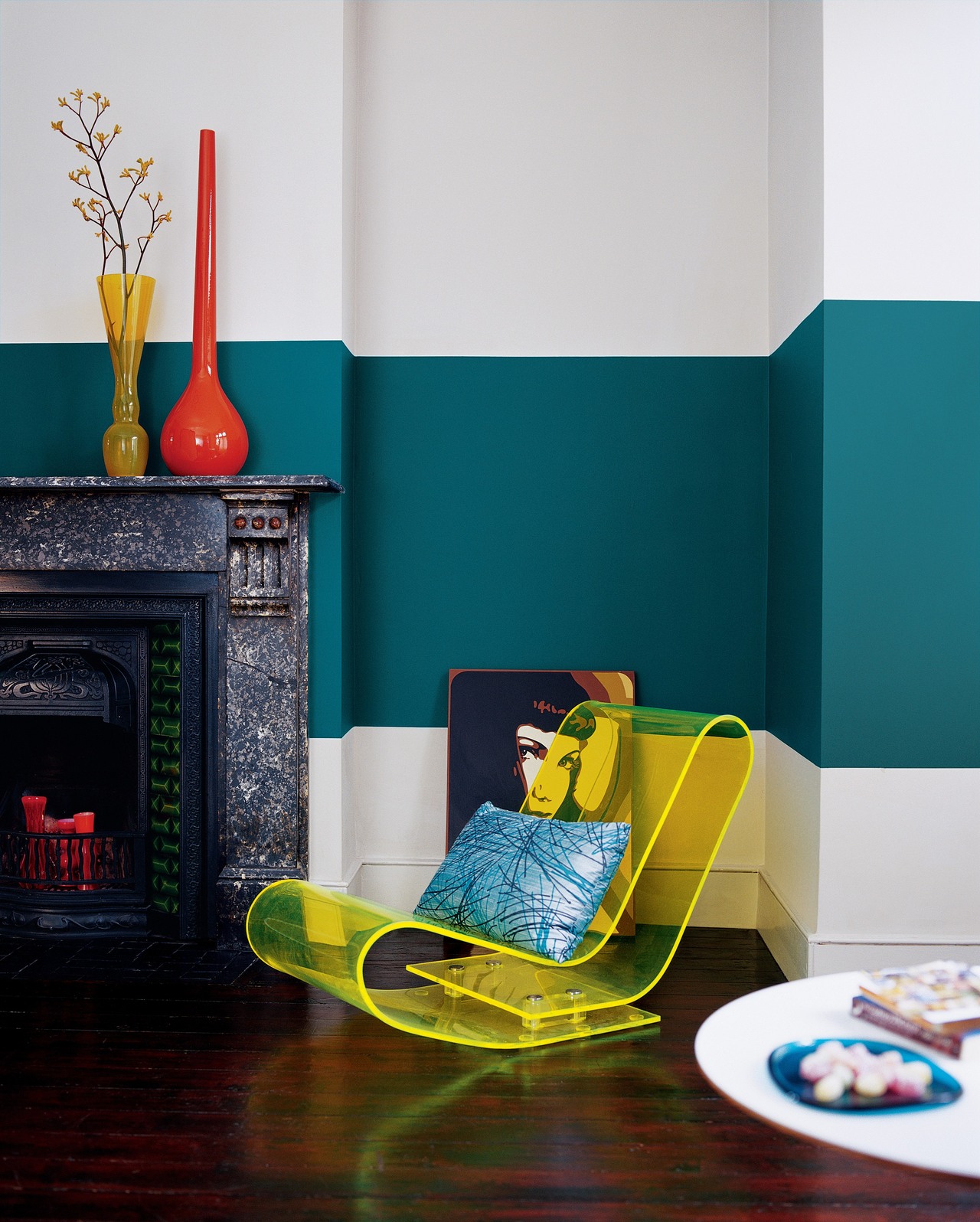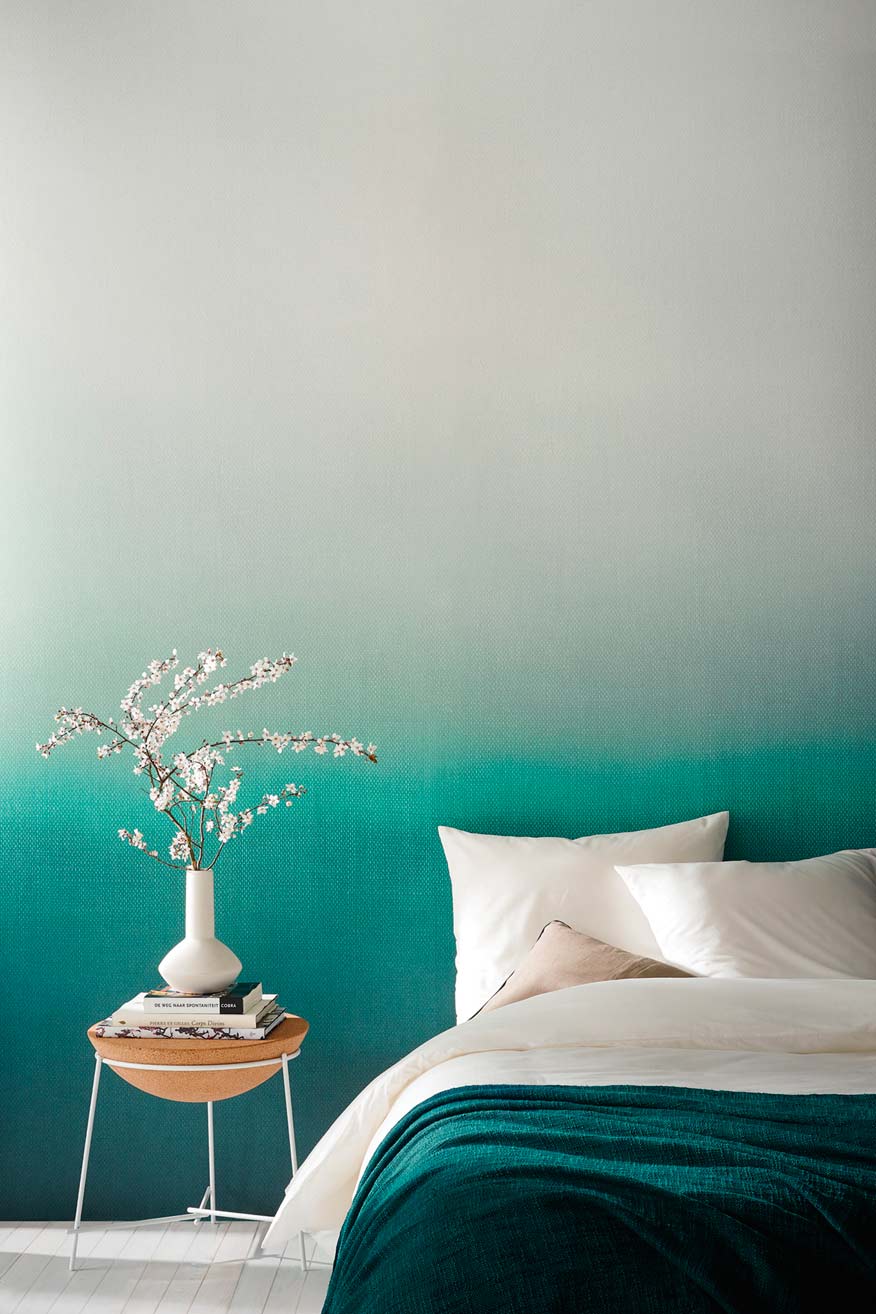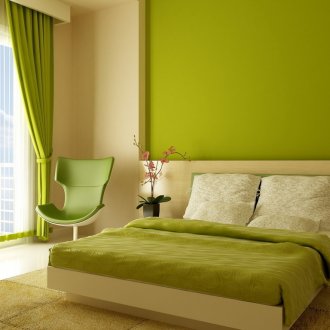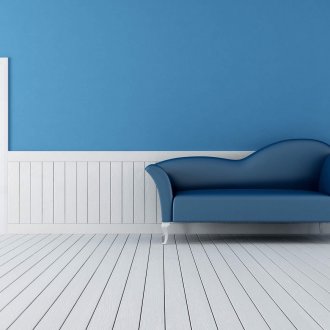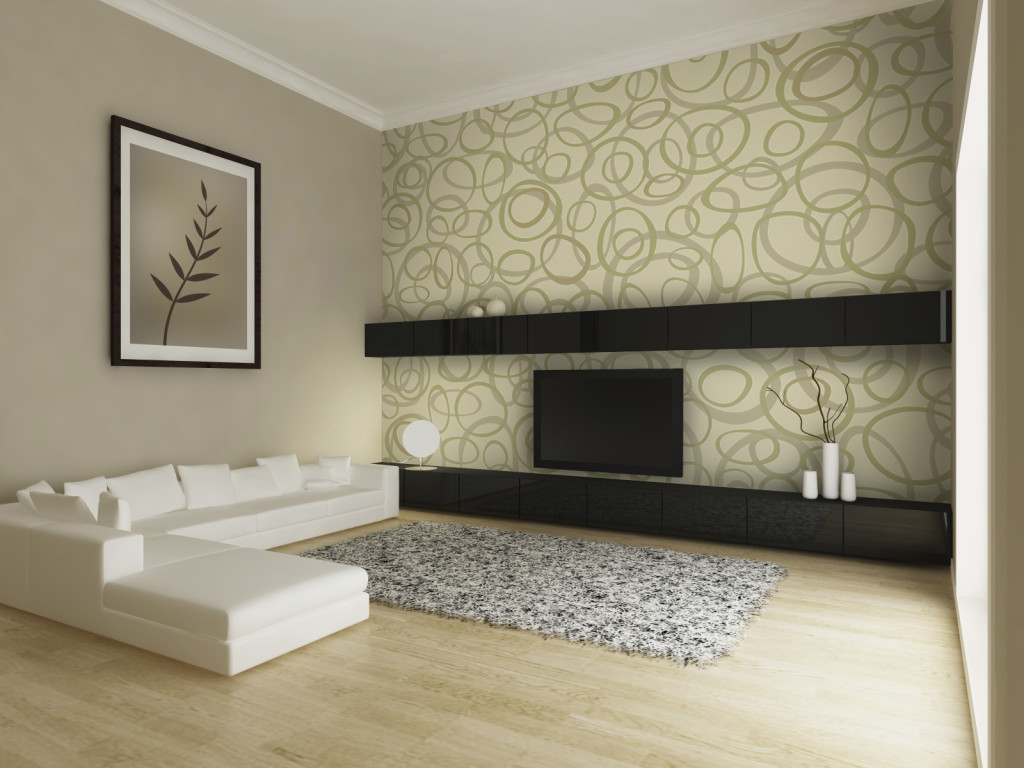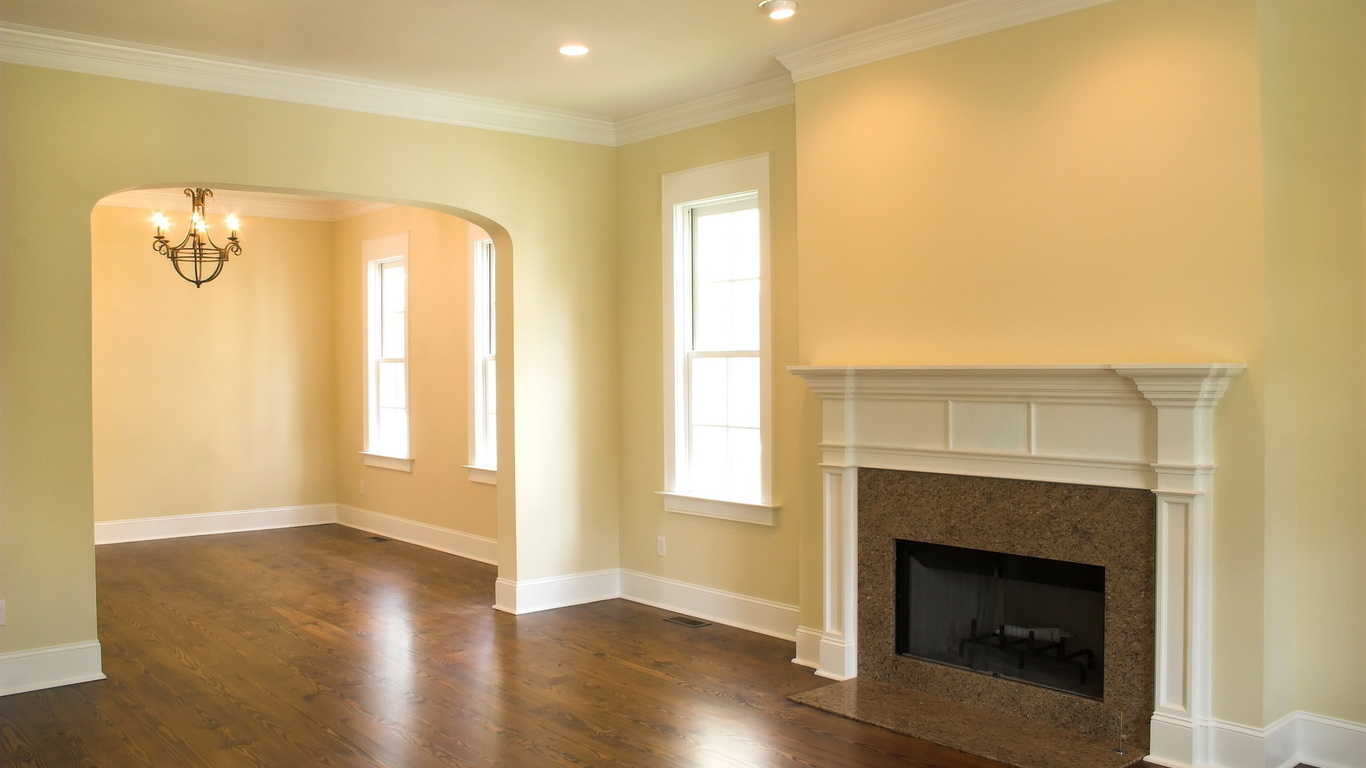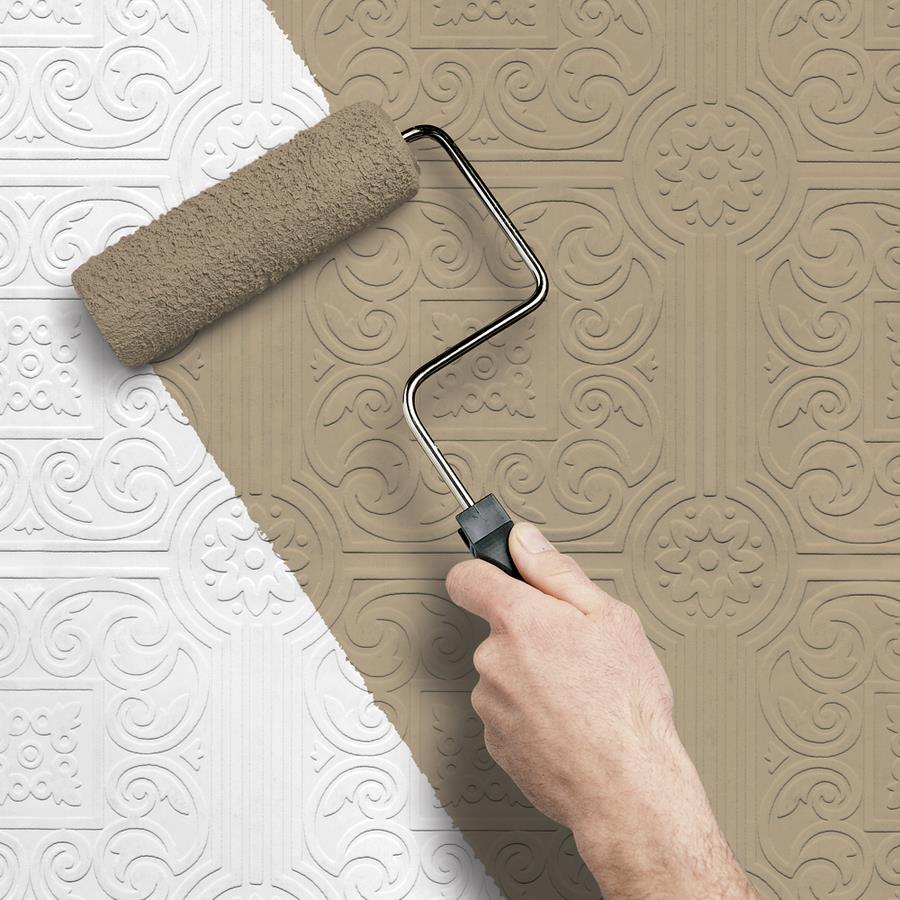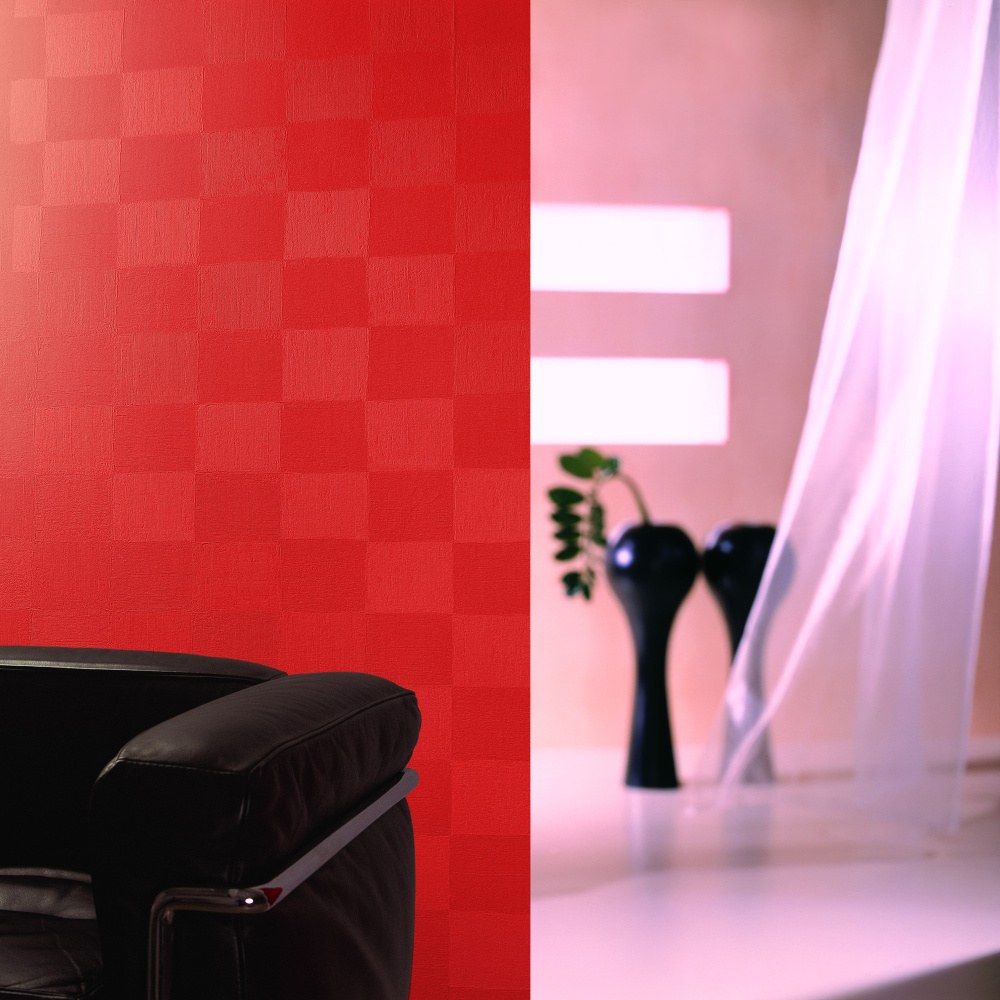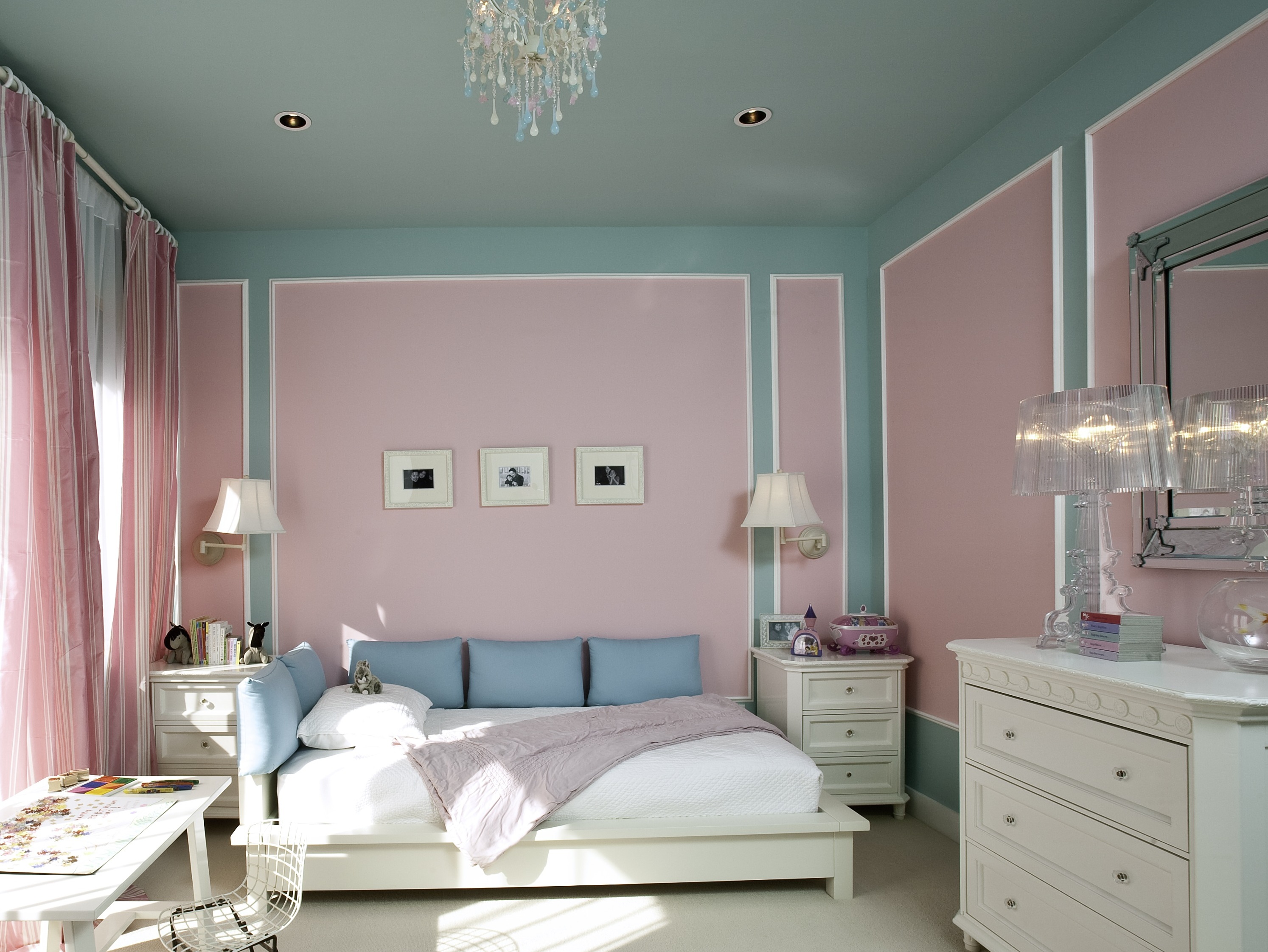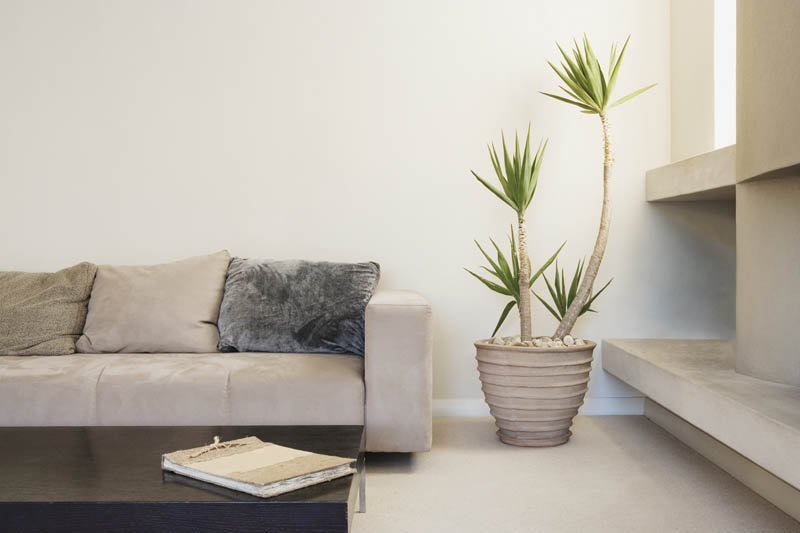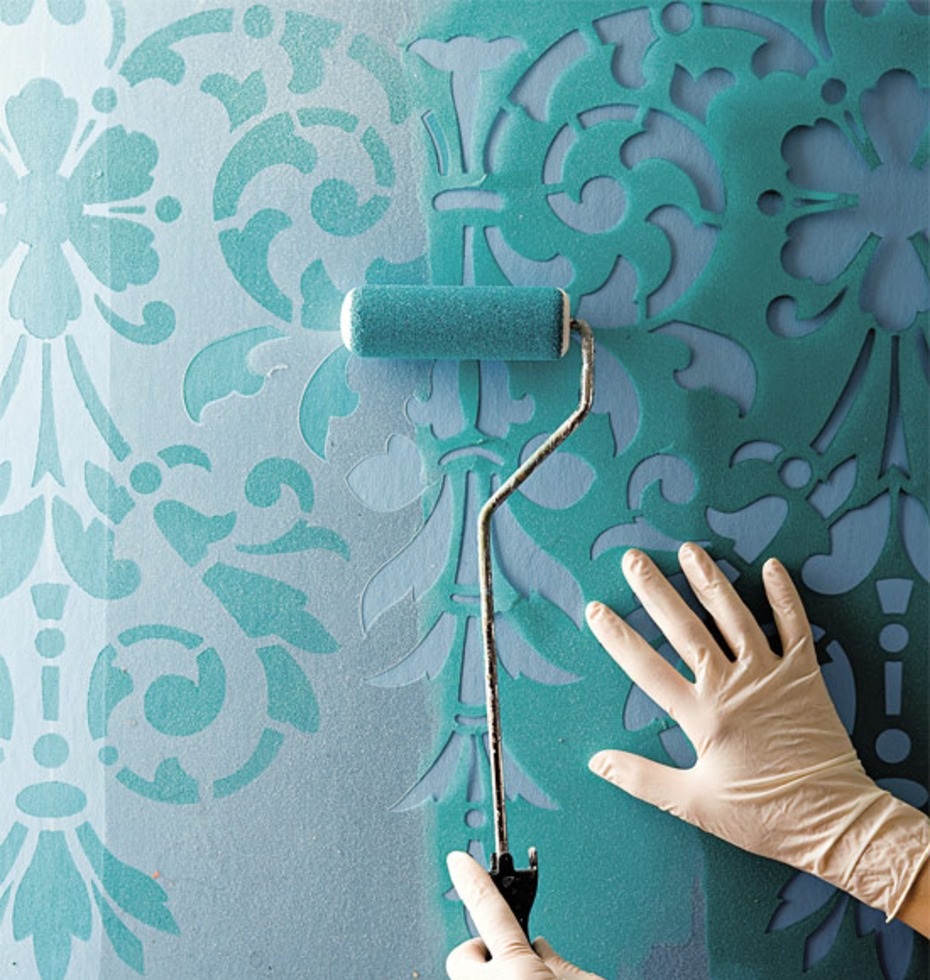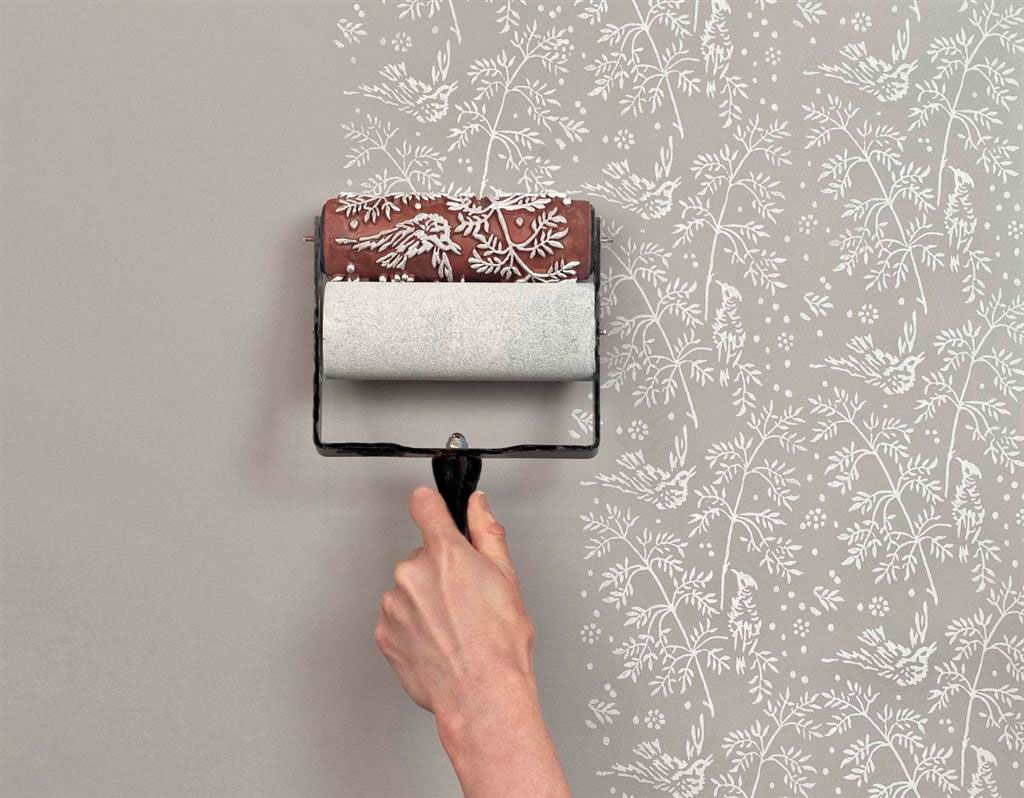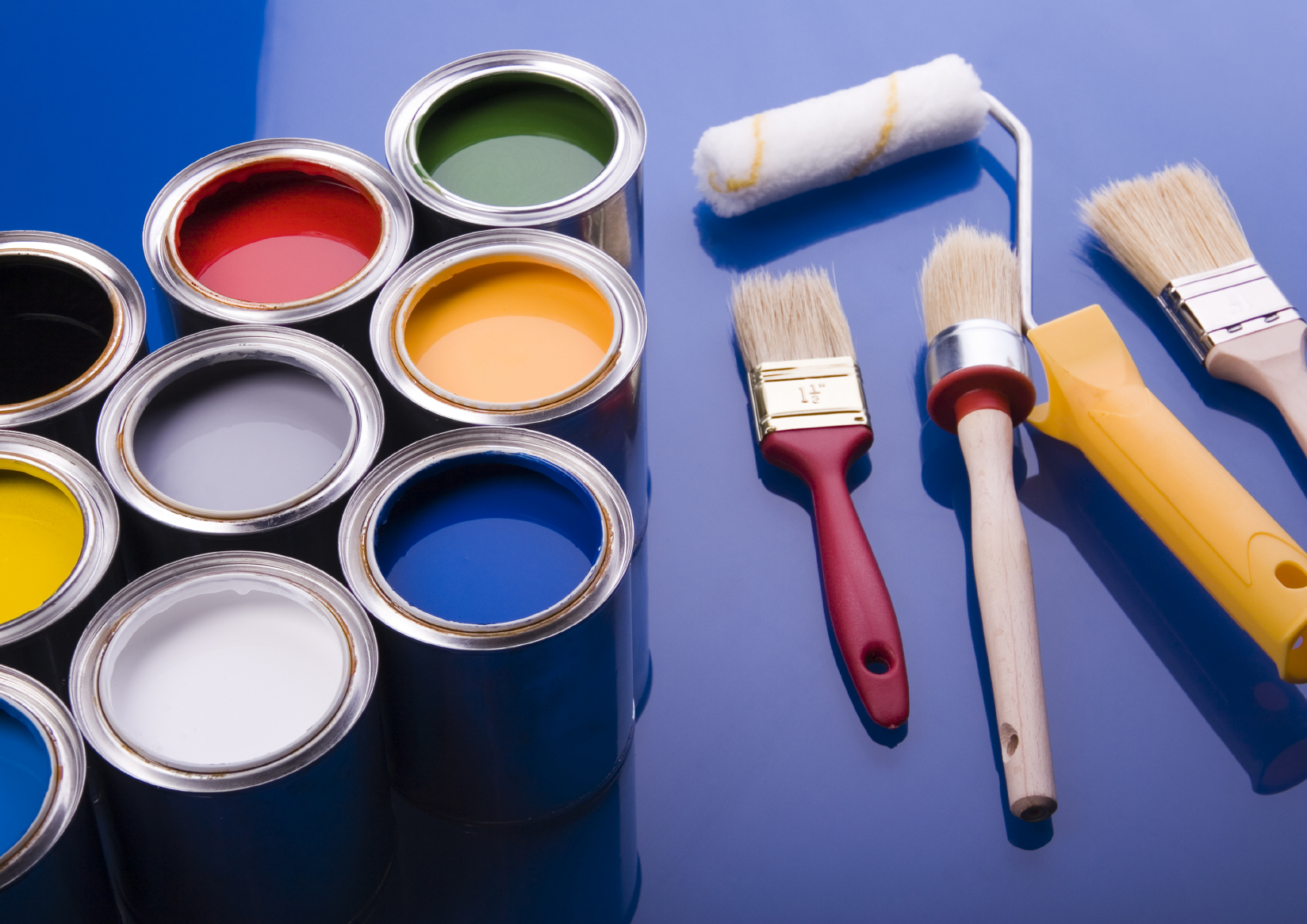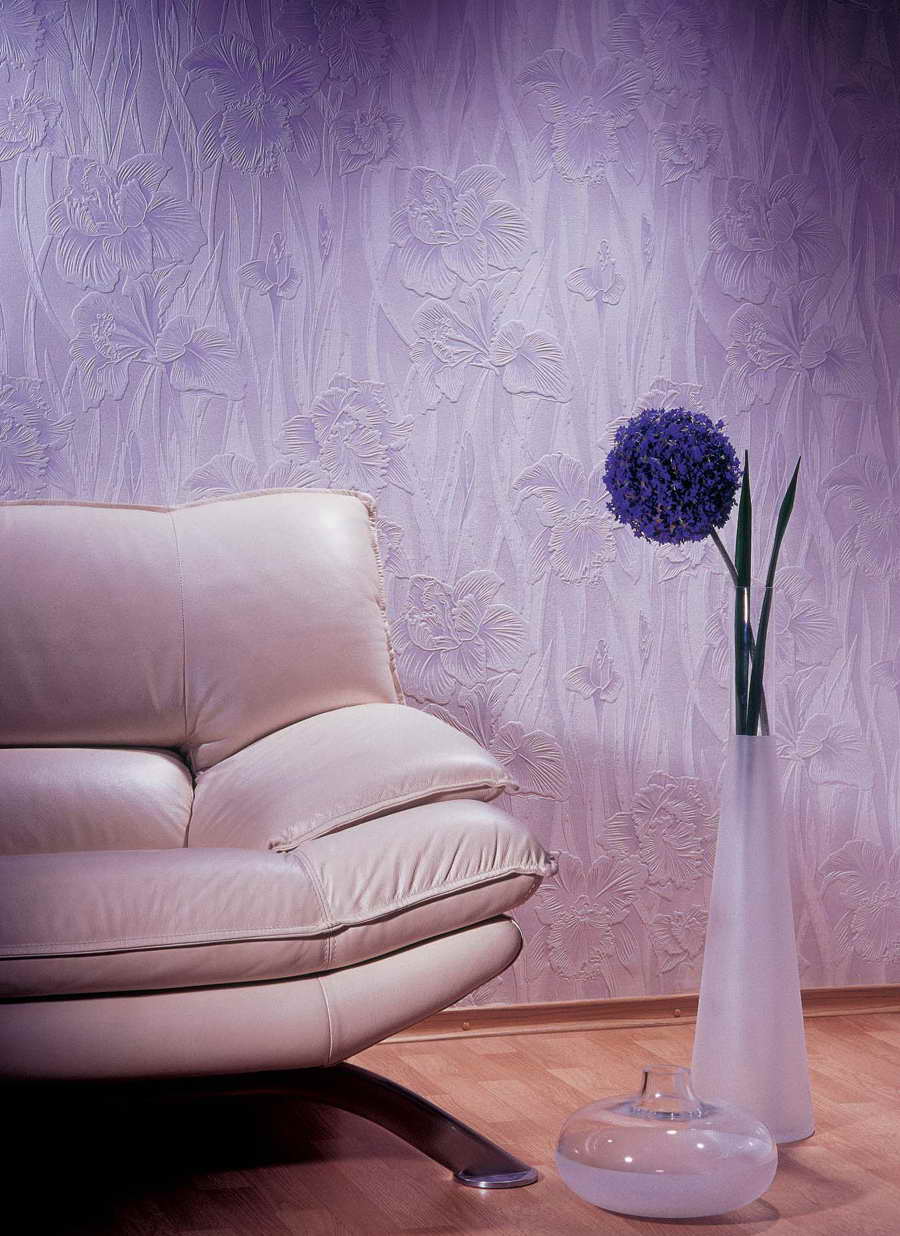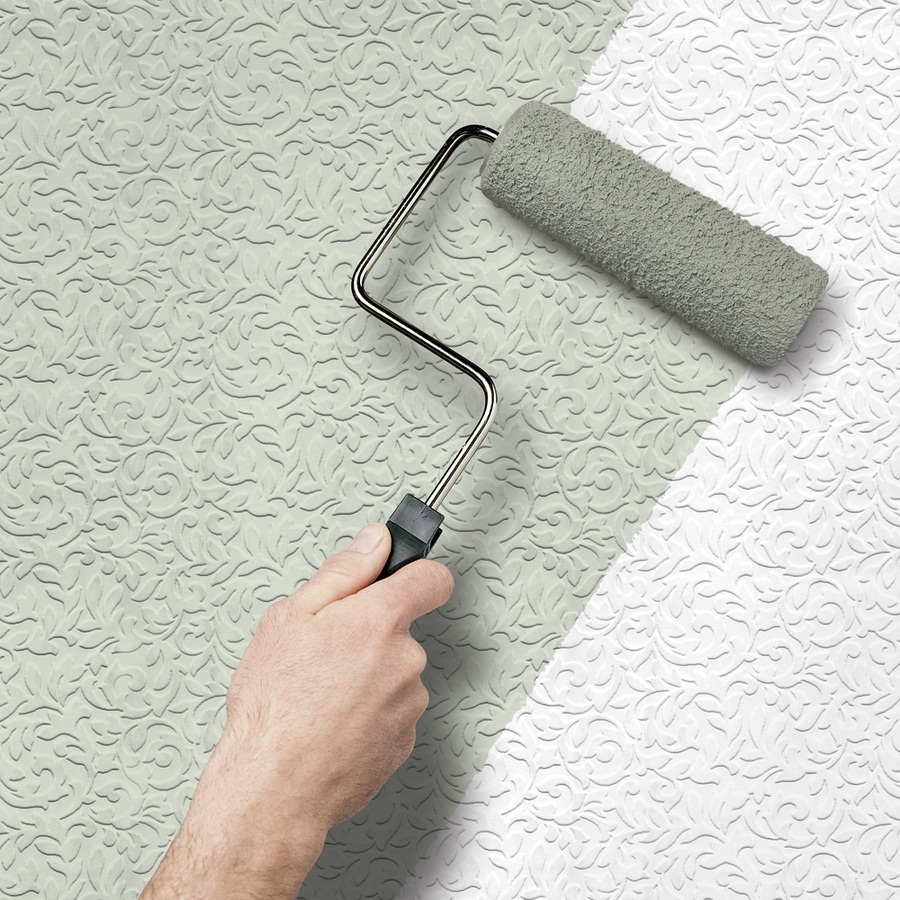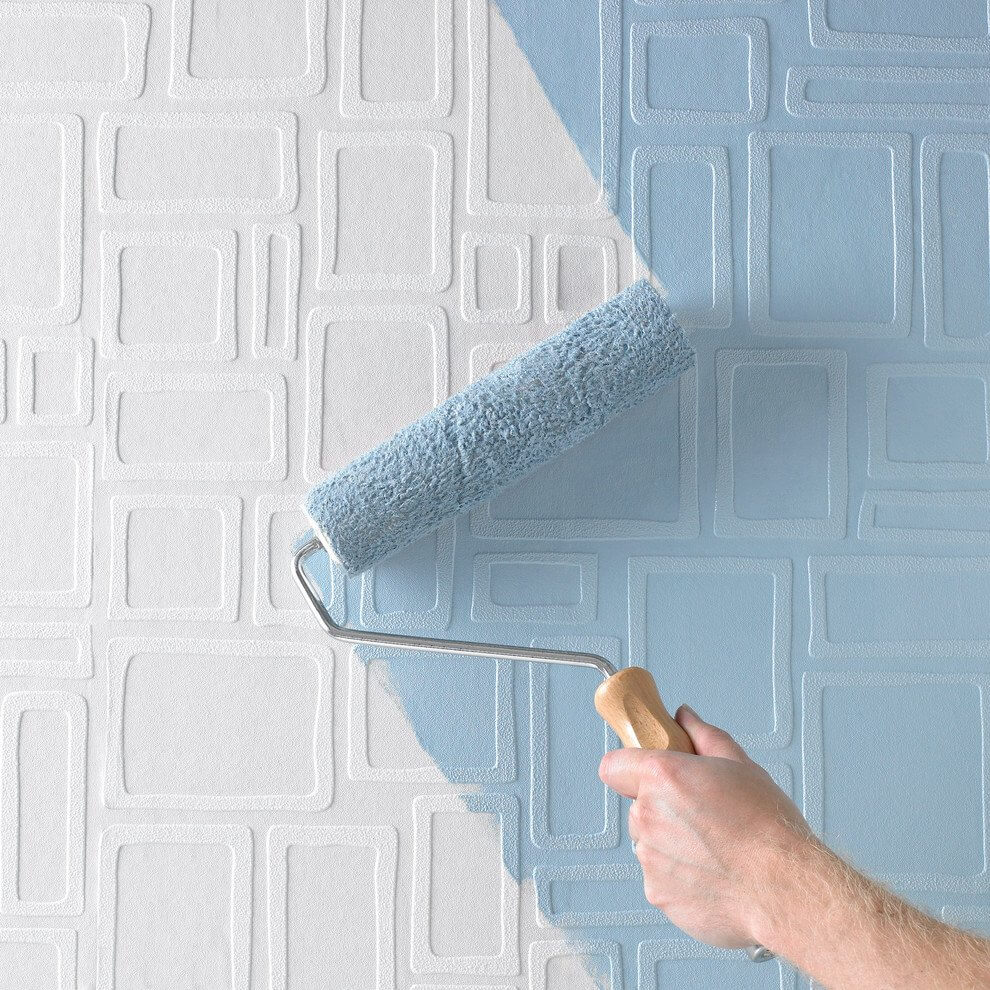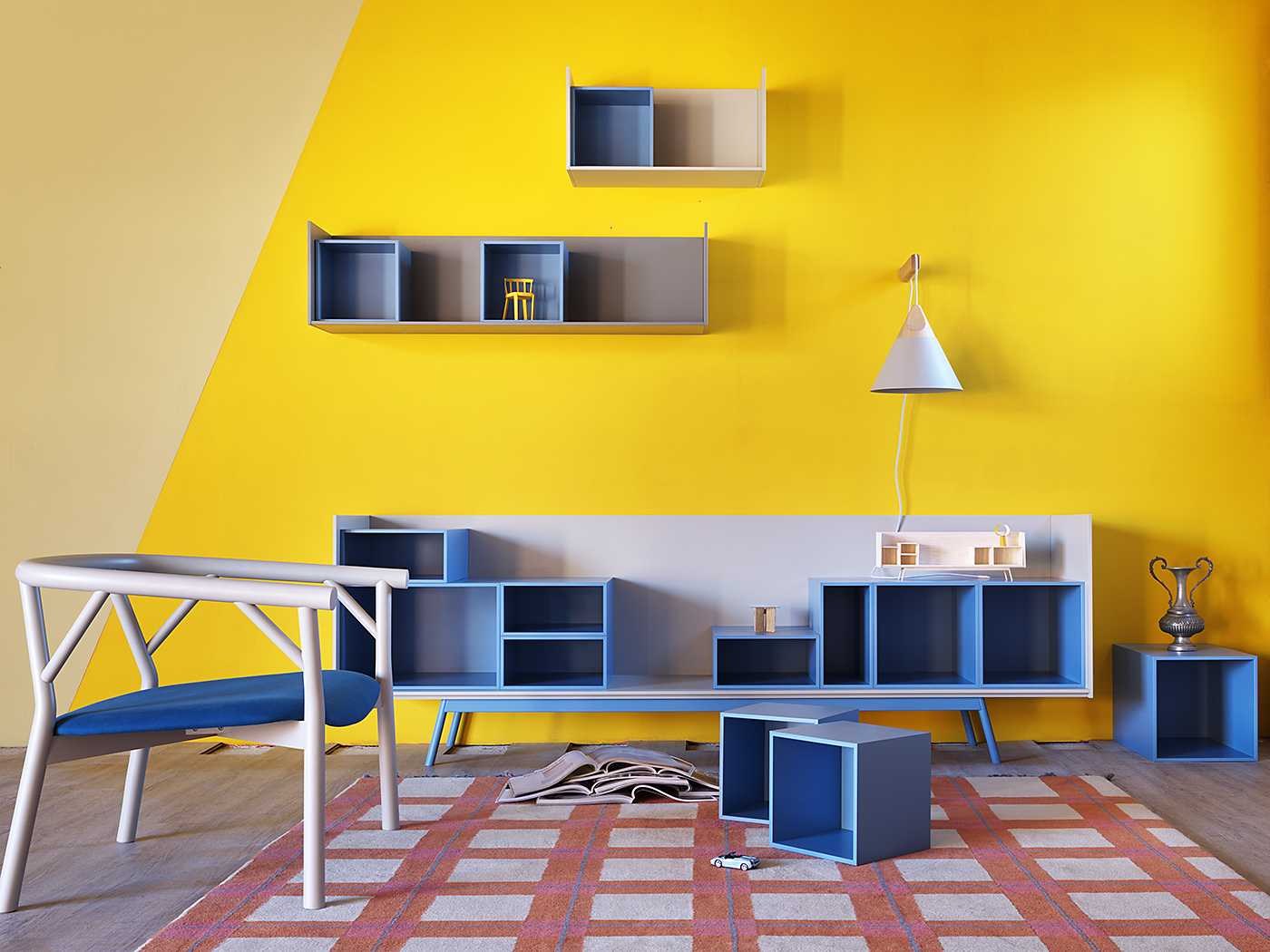Paint for painting wallpapers: a new mood every day (24 photos)
Content
Changing the color of the wallpaper is the easiest and fastest way to refresh the interior, and the availability of a large number of wallpapers, adapted for this, is very convenient for this. The most popular design solution today is painting wallpaper with special paint. This is a very quick and inexpensive process that allows you to change the interior at least every day.
For such a quick repair, you should select a decorative paint with certain characteristics:
- it should be easy to apply;
- dry quickly;
- be environmentally friendly;
- no pungent odor;
- must fulfill, in addition to the aesthetic function, the task of masking the surface flaws that have appeared;
- after application there should be a stable, relatively long-lasting effect - a beautiful surface, preferably strong.
It remains to understand which paint for painting wallpaper is best suited.
Basically, for indoor use, water-based and water-dispersible.
Water-dispersible are not afraid of moisture, and after drying, the coating can be washed and wiped - this makes it possible to use them in the kitchen and in the bathroom. Water-based emulsions are less durable, they can not be wiped and washed, but their price makes the idea of painting wallpaper very affordable and not burdensome for a wallet.
The properties of the paint depend on the composition: which polymers are used in a particular paint.
Paint for wallpaper (water based) based on PVA does not tolerate moisture, so it can only be used in dry rooms. Acrylic resins are used to make a more stable and bright option - acrylic paints. They are not washed off by water, they are not afraid of sunlight, for a long time the painted walls look fresh.
Both types of paints do not emit anything into the air either during drying or after, so they can be used when repairing a child’s room. They do not have a smell to paint the walls with them; special skills are not required - a brush, roller, spray gun are suitable. Conveniently, the wall is already initially ready, but it is advisable to inspect and glue it where necessary.
Color palette
You can immediately take the paint of the desired color, but it is not always possible to find the desired one, so you can use the method of creating the desired color using a special pigment - tinting.
However, it is quite difficult to properly prepare the mixture of the desired shade without experience - after drying, the surface turns out to be several tones darker than intended, in this sense, acrylic and latex paints are more convenient, they almost do not change color. You will have to prepare the paint once and in one container, otherwise it will be impossible to achieve a uniform color.
You can make a tint yourself, but it will take a lot of time. Pigment is added to the white paint in very small portions, then tested on a portion of the wall. After drying, you can decide whether the mixture is suitable. Each portion of the pigment needs to be measured and recorded - this will help to repeat the mixing if necessary. It should also be borne in mind that dried paint becomes more saturated.
However, if a color is conceived for which several pigments need to be mixed, the process can significantly drag out.
This service can be obtained at the store, where the amount of pigment for decorative paint is calculated on a computer, if necessary, the process can be repeated with the same accuracy. Computer tinting is carried out in many stores, you can make inquiries in advance.
After the color is selected, it should be decided whether the surface will be glossy or matte, this also affects the choice.
Glossy surfaces are rarely used in the interior of a living room, however matte and glossy areas can be combined to highlight, for example, a part of a pattern or a specific part of a wall. Latex paint gives the smoothest and most beautiful shine.
What wallpaper can be painted?
Many types of wallpaper are initially adapted for applying color to them, for the rest you can also choose the right paint.
Non-woven
Paint for non-woven wallpaper will suit any water-based. It is simply applied by roller, brush, spray to the surface.
There is also another way of painting with this type: it must be carried out before gluing to the walls. In this case, the wallpaper is covered with the desired color on the reverse side, which gives an interesting effect of highlighting their relief. This happens due to the fact that the color appears only where there is no polymer, that is, the structural elements will retain their original appearance. Applying this technique with different colors, you can get the original texture. Acrylic paint is used for this technique.
The relief can be distinguished using a special roller, in this case only the protruding parts of the pattern will be painted.
Vinyl
This wallpaper can also be painted: you need to apply acrylic paint on a latex basis. However, non-woven vinyl can also be painted with a water based emulsion.
It is possible to paint on both sides before gluing. When applying color to the back, the hue changes while maintaining the overall texture. In this case, acrylic paint for vinyl wallpaper is suitable.
Cullet
Acrylic and latex paints are used, an interesting effect is obtained. This wallpaper can be repainted at least 10 times.
Paper
For this type, any paint for wallpaper is suitable for painting, it is painted like a normal surface.
If latex paint is used for paper wallpaper, the wallpaper will significantly increase its wear resistance. It should be applied in a thin layer. A light beautiful shine will appear on the surface.
You can also paint with ordinary water-based paints, the option is certainly not very durable, but you can get a change in the interior with little effort and expense.
Liquid wallpaper
Their color does not change, since all color components are already included in the composition, however, you can paint the wall before application - this will make the shade of the texture more even, no spots will appear on the wall. For this, oil paint, nitro paint is suitable. In order to make the wall a little rough, you can add a little sand.
If you want to emphasize individual elements in the wallpaper pattern, you can use pearl decorative paints in various shades. With their help, they also emphasize the relief on decorative plaster or dried liquid wallpaper.
Which paint to choose?
With the types of wallpaper, everything is clear, now you need to go to the colors. For staining wallpapers, three main types are used.
Acrylic
Hydrophobic, durable paint does not dampen and is not damaged by mechanical stress. It is matte in light reflection, but its brightness completely compensates for this. Available in a variety of colors and shades, there are options with glitter and mother of pearl, metallized in gold, silver and bronze.
Suitable for any idea, you can also recall the presence of acrylic varnish, which can also be used for painting wallpapers.
Many positive qualities that can affect the choice:
- there is no smell, there are options for flavored paint, for example, with the smell of apples;
- easy to apply, has a density, so when applied does not spread;
- does not fade and does not change color for many years;
- participates in air exchange - “breathes”.
Acrylic paint for wallpapers can be expensive. The price is quite high, especially in varieties with gloss and metal, but the beauty of the coating fully pays for it.
Latex
Latex paint for wall-paper for painting creates a smooth coating with high-quality gloss and with excellent characteristics. It retains a luxurious look over the years, it is quite expensive.
The package indicates the type of paint, the degree of its resistance to moisture, the presence of gloss. We can say that this is the perfect paint for wallpaper for painting.
Water emulsion
This paint is made on the basis of PVA, it is usually sold in white, the desired shades are obtained by adding coloring pigments. It is applied on walls, ceilings.
They have a low price, so choosing this paint, you can not save. However, the walls will have to be regularly refreshed: the coating burns out in the sun, in addition, it is unstable in high humidity. That is, you can’t wipe these walls, but you can easily and cheaply repaint them.
Paint consumption
Having decided how to choose a paint for wallpaper, you can begin to calculate the required amount.
On average, about 250 grams of material per square meter of surface, but it is difficult to accurately predict. In any case, it is better to take with a small margin. In addition, each type of paint is usually accompanied by detailed instructions with an approximate consumption - this information should be studied by the manufacturer and taken into account.
The amount of material is determined by the type of wallpaper, as they all differ in absorbency. But even knowing the degree of absorption of paint by the wallpaper, the flow rate can be determined only approximately - even in different rolls, wallpapers with different absorption properties may appear.
Vinyl wallpapers are the least absorbent; in this case, the consumption will be no more than 1 liter per 10 square meters of surface. But this does not hurt to take material with a small margin.
Wallpaper with high gyroscopicity can be densified: first apply a primer coat. Instead of a special composition, diluted wallpaper glue is suitable. Then the surface should dry well, after which paint is applied for wallpaper for painting in 1-2 layers.
The variety of different materials on the market allows you to freely choose, there is material for any idea, and painting glued walls is no exception.
